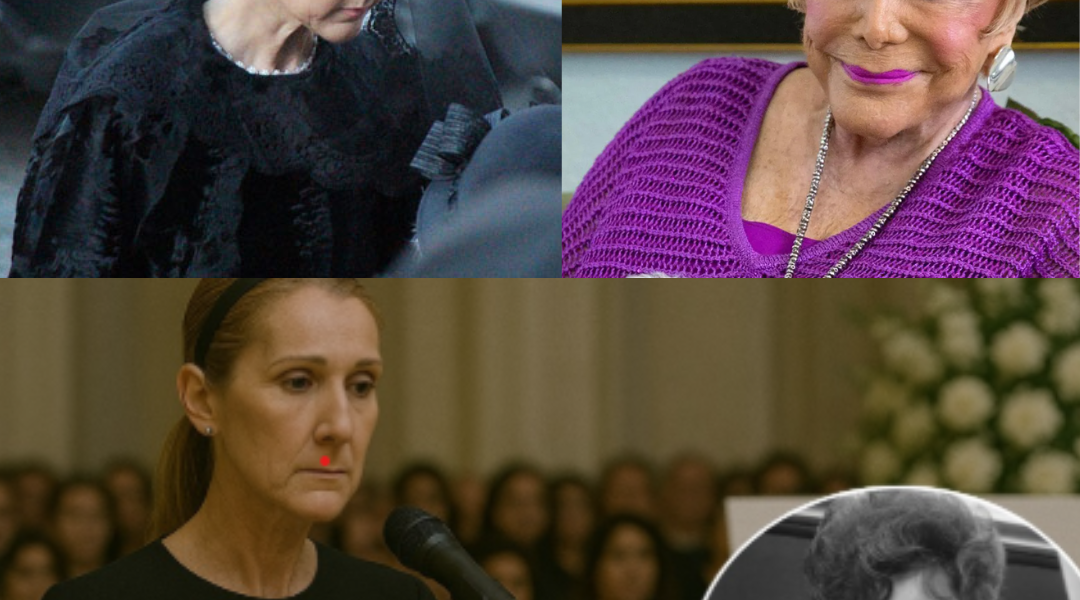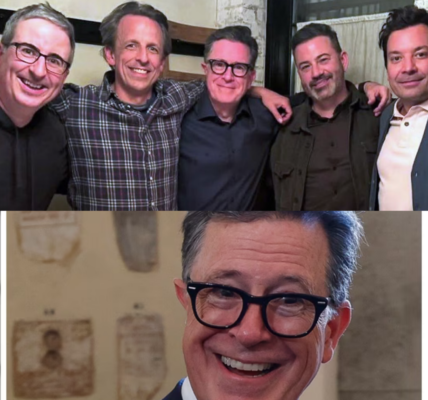No One Expected It: Céline Dion Secretly Appeared at Connie Francis’s Funeral – and Did Something That Made Everyone Cry in Silence
There are moments too quiet for headlines, too delicate for camera flashes. They happen not in arenas, not on red carpets or broadcast stages — but in hushed corners of life, where grief and grace meet without announcement.
One such moment unfolded on a soft, gray morning in a small chapel just outside Newark, New Jersey. There were no paparazzi, no press releases. Just a closed casket, the murmur of hymns, and a woman in black slipping quietly into the back row.
That woman was Céline Dion.
And nobody saw her arrive.
I. A Quiet Arrival
It was a private funeral, attended only by family and a handful of close friends. The world had barely registered the passing of Connie Francis, the iconic voice behind hits like Who’s Sorry Now, Stupid Cupid, and of course, Where the Boys Are. She had faded from the public eye in her later years, and in many ways, chose to leave quietly.
Those who knew her understood this was how she would have wanted it — no extravagant goodbyes, no flashing bulbs, no headlines shouting her name one last time.
The chapel was intimate — no more than fifty seats. Pale light filtered through stained glass. A modest spray of lilies rested on a polished wooden casket. The organ had just gone quiet when the rear doors creaked open. Heads turned slightly, but not fully — no one expected more guests.
Céline Dion entered alone.
She wore black from head to toe: a long coat, a modest dress, low heels. No makeup. No jewelry. Her hair was pulled back simply, as if she’d done it herself that morning without a mirror. She moved like someone trying not to be seen. Like someone who needed to be there, but didn’t want the moment to be about her.
No one recognized her — not at first.
II. A Shared Thread
Though their careers were decades apart, Céline Dion had long expressed her admiration for Connie Francis. In quiet interviews, she’d credited Francis as one of her early influences. The purity of Connie’s tone, the emotional clarity in her phrasing — they were hallmarks Céline had studied as a young girl growing up in Charlemagne, Quebec.
More than once, Dion had called Where the Boys Are one of the most heartbreakingly innocent songs she’d ever heard.
But admiration from afar is one thing. Appearing — uninvited — at a funeral is another. Yet here she was, slipping into a pew without a word, folding her hands, and bowing her head.
Some would later whisper that they’d felt something shift the moment she entered. A stillness. A weight in the air. Others only realized who she was much later, when the voice came.
III. The Name That Opened the Wound
It happened halfway through the ceremony.
A family friend — an older man with a thick New Jersey accent — stepped to the podium. He spoke lovingly about Connie’s early career, her Italian roots, the long, difficult battle with mental illness she’d fought with courage. Then, he said the name.
“And of course… there was Where the Boys Are — the song that made her a star…”
The room was quiet, waiting for more. But nothing came. The man choked up. He tried to speak again, then stopped, hands trembling, eyes filling.
And then — before anyone could fill the silence — someone stood.
From the back of the chapel, Céline Dion stepped into the aisle.
She didn’t ask. She didn’t introduce herself. She simply began to walk. Slowly. Deliberately. Toward the front.
No one stopped her. No one dared.
IV. A Voice Like Grief
She reached the casket, placed a hand gently on the edge, and closed her eyes.
Then, without accompaniment, without permission, she began to sing.
“Where the boys are…
someone waits for me…”
The sound was fragile. Raw. Not the powerhouse voice that once soared through Las Vegas theaters and stadiums around the world. This was different.
It was human.
Her voice cracked slightly on the third line. She did not hide it. She did not try to polish the moment into performance. It was as if the song were breaking through her — not the other way around.
And in that small room, time stopped.
One woman covered her mouth. Another man bowed his head, shoulders shaking. No one took out a phone. No one dared move.
“Where the boys are,
my true love will be…”
Her voice grew stronger with each phrase — not louder, but deeper. More anchored. She reached the final chorus with a kind of quiet reverence that was not about pitch or perfection, but presence. Her pain — private, intimate, unspoken — was folded into every word.
Those who’d followed Dion’s career knew she had largely stepped away from the public eye after her diagnosis with stiff-person syndrome. Singing, for her, had become increasingly difficult. Painful. Sometimes impossible.
And yet, here she was.
Singing.
Not for a crowd. Not for a camera. But for Connie.
And perhaps — in some way — for herself.
V. A Flower, A Bow, A Departure
The song ended without applause. Only silence. And in that silence, Céline reached into her coat and drew out a single white rose.
She stepped forward, placed it gently atop the casket, and bowed her head.
No words.
No tears.
Just breath — shallow, visible in the cold air of the chapel.
Then she turned.
She did not look left or right. Did not meet eyes. She walked slowly back down the aisle, past the pews, past the heavy wooden doors.
She left the way she came.
No escort. No entourage.
And no one followed.
VI. Echoes in the Room
The ceremony resumed — but it was not the same. Something had shifted.
Grief had become something sacred.
A woman sitting in the second row — later identified as Connie’s niece — whispered to her husband:
“Was that… Céline?”
He nodded slowly.
No one quite knew what to make of it. There was no announcement. No explanation. No statement after the funeral. No photos appeared in tabloids. No video surfaced online.
All that remained was the memory — held by those who had been there.
A shared experience, whispered in the days and weeks that followed. Something too delicate to explain, and too profound to forget.
VII. The Unseen Performance
In an age obsessed with documentation, with capturing every moment on screens and timelines, this stood apart.
There were no likes. No reposts. No hashtags.
Just fifty or so souls who happened to be in the right place at the right moment — to witness something rare.
A farewell not just to Connie Francis, but perhaps to an era of music, of dignity, of artistry that didn’t need to announce itself.
Céline Dion didn’t come to sing.
She came to mourn.
And in doing so, she reminded everyone in that chapel why music exists in the first place.
Not to dazzle.
But to feel.
To connect one human heart to another — across time, across silence, across the unbearable space that death leaves behind.
VIII. The Woman Who Wasn’t Supposed to Be There
Later that week, a family member confirmed Céline’s attendance — but asked that the press respect the privacy of the event.
“She didn’t want anyone to know. She didn’t come as a celebrity. She came as someone who cared.”
And so, the story never made the evening news. It wasn’t a headline on CNN. It wasn’t trending on Twitter. It passed — like all true moments of grace — unnoticed by the machinery of fame.




